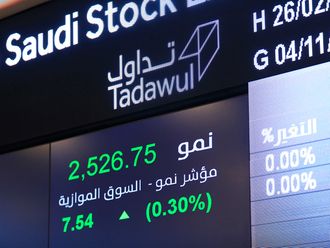London: The dollar failed to make much headway on Friday after a jump in U.S. job creation left stock markets in an optimistic mood but did not convince traders it would be a trigger for the U.S. Federal Reserve to move toward tighter monetary policy.
Sterling, not for the first time in recent months the main weekly winner on major currency markets, was back near six-year highs versus the dollar and against a basket of currencies.
The dollar’s failure to launch has been the big disappointment on currency markets this year. Solid U.S. jobs numbers for the fifth month running backed analysts who have begun again to predict it may take off in the coming months.
Against that, the euro continues to be backed by inflows of cash into European bond and stock markets and also by talk in the market of buying by Asian central banks, recycling the dollar reserves they are accumulating into other currencies.
After a half-cent swing after the jobs numbers on Thursday/s, the dollar was just over 0.1 per cent higher against the euro at $1.3585 on Friday.
The dollar index was up 0.1 per cent at 80.294.
Volumes fizzled out in Europe with markets in United States closed for Independence Day.
“You’re getting this sort of muted reaction maybe because no one is that convinced these numbers will really change the Fed’s outlook,” said Daragh Maher, a strategist with HSBC in London.
“It played reasonably well yesterday as a dollar positive, but the scale of the move has not been so big. It has gained, just not that much.” Maher drew parallels with the recent play on sterling, driven higher by investors’ conviction that strong UK economic numbers would eventually prompt the Bank of England to shift to a more hawkish tone on interest rates.
That seems to have happened in the past month, with Governor Mark Carney and colleagues hinting that the bank could even raise rates for the first time before the end of the year. Fed chief Janet Yellen, however, for now has offered little sign of heading in the same direction.
“It seems as though people are slightly more reluctant to take on the Fed in the way we saw with the Bank of England,” Maher said. “But maybe there comes a tipping point with data like this where the message has to change.” SWEDISH CROWN DOWN Considering the strength of U.S. jobs data over the past months, some traders said the failure of the dollar to stage the recovery was a sign that investors felt the U.S. Federal Reserve had no appetite for hiking rates in the near future.
It would rather wait for wage inflation to pick up before tightening policy, analysts said. And unless two-year Treasury yields rose sharply, the dollar, which has a good correlation to U.S. yields, was unlikely to push much higher.
Against the yen, the dollar hovered near a two-week high at 102.06. It was up 0.7 per cent so far this week, on track for its best performance in 2-1/2 months.
The Swedish crown extended losses, having fallen sharply on Thursday after the country’s central bank slashed its interest rates by a half point to just 0.25 per cent and gave a dim outlook on growth that hinted more might be in the pipeline.
Poor industrial output numbers added to concerns about the prospect of deflation in Sweden and prodded the crown lower on Friday. The euro was last trading 0.2 higher at 9.3067, having hit a 3-1/2 year high of 9.39 crowns on Thursday.
“The Riksbank acted decisively against Swedish deflation risks yesterday (but) given the zero lower bound, the Swedish krona needs to weaken a lot further,” said Alvin Tan, a strategist with French bank Societe Generale in London.
“Despite the recent fall in the crown, it remains too high in trade-weighted terms, whether in real or nominal terms. The Riksbank needs a weaker krona, and it has historically been willing to pursue unconventional policies in extremis.”












